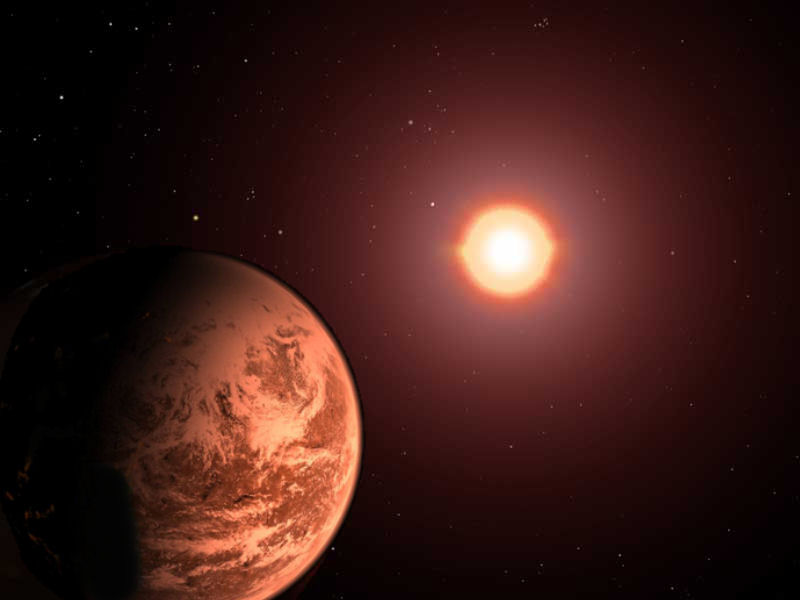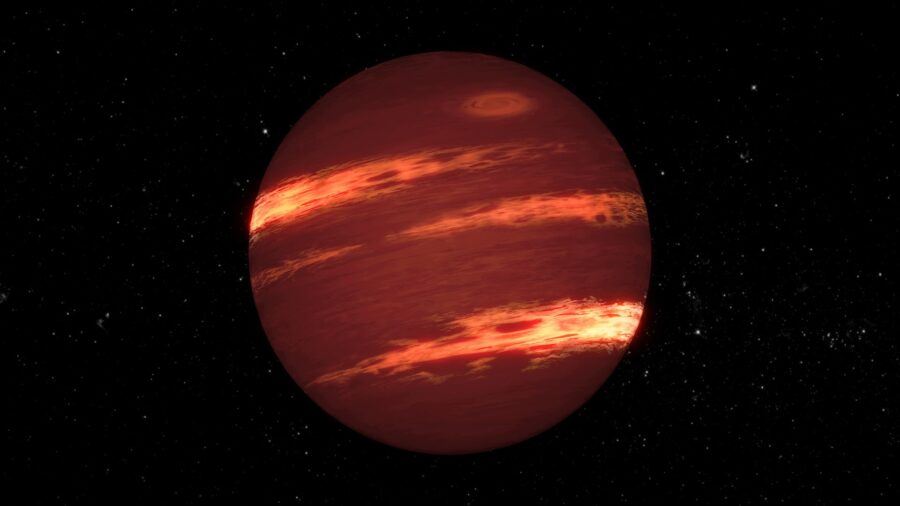Forbidden Planet’s Discovery Has Astronomers Questioning Planet Formation
A gas planet the size of Jupiter has been found orbiting a tiny sun, which should be impossible—thus earning the planet the nickname "forbidden planet."

The recent onslaught of UFO sightings has been causing more and more people, including Close Encounters of the Third Kind director Steven Spielberg, to question what is going on in our skies. Meanwhile, the astronomers at Carnegie Science have teamed up with researchers at twelve universities and laboratories to look a little further into space, and they’ve found something that is making scientists question everything they previously knew about planet formation. Out in the middle of the Milky Way galaxy, a planet the size of Jupiter is orbiting a tiny sun—something astronomers previously thought was impossible, thus earning the phenomenon the fitting name of “forbidden planet.”
TOI-5205 is the uninspired name of an M dwarf star that is about four times the size of Jupiter. This star is a little less than half the size of Earth’s sun and only about half as hot, which gives it a bright red color. The small stature of this red dwarf doesn’t stop it from hosting planets, but it does typically mean that gas giants like the “forbidden planet” don’t orbit this type of star.
Red dwarfs like TOI-5205 are the most common type of star in the Milky Way galaxy. They make up about three-quarters of all the stars in the galaxy, yet none of them can be seen with the naked eye. Despite being so small, these types of stars usually host more planets than giant stars like our sun, just not planets like the “forbidden planet.”
The “forbidden planet” is a gas giant the size of Jupiter. Like TOI-5205, this gas giant was also given a highly creative name and is known as TOI-5205b. TOI-5205b was first discovered by a NASA satellite called Transiting Exoplanet Survey Satellite, otherwise known as TESS.

What is most surprising about TOI-2505 forming a gas giant planet like the “forbidden planet” is that the size of TOI-2505 is only about four times the size of Jupiter, but the TOI-5205b is the same size as Jupiter (aka the biggest planet in our solar system). This means that the size of the planet orbiting this tiny sun is massive in comparison to anything scientists have previously discovered.
Previously, a small number of gas giants had been observed orbiting other older M dwarf stars, but each of these stars had a much higher mass to make up for the gas giants’ size. Typically, gas giants will orbit suns that are much larger than they are, in a size comparison similar to a pea orbiting a grapefruit. What is surprising about the “forbidden planet” and TOI-5205 is that the comparison is much more similar to a pea orbiting a lemon. This major difference in size means that when the “forbidden planet” orbits its sun, it blocks out seven percent of the sun’s light.
The existence of this forbidden planet in TOI-5205’s solar system rewrites everything astronomers know about the formation of gas giants. Basically, the “forbidden planet” shouldn’t exist, and yet it does. This opens up a brand new world for scientists to explore as they dive into how the “forbidden planet” came into formation.












